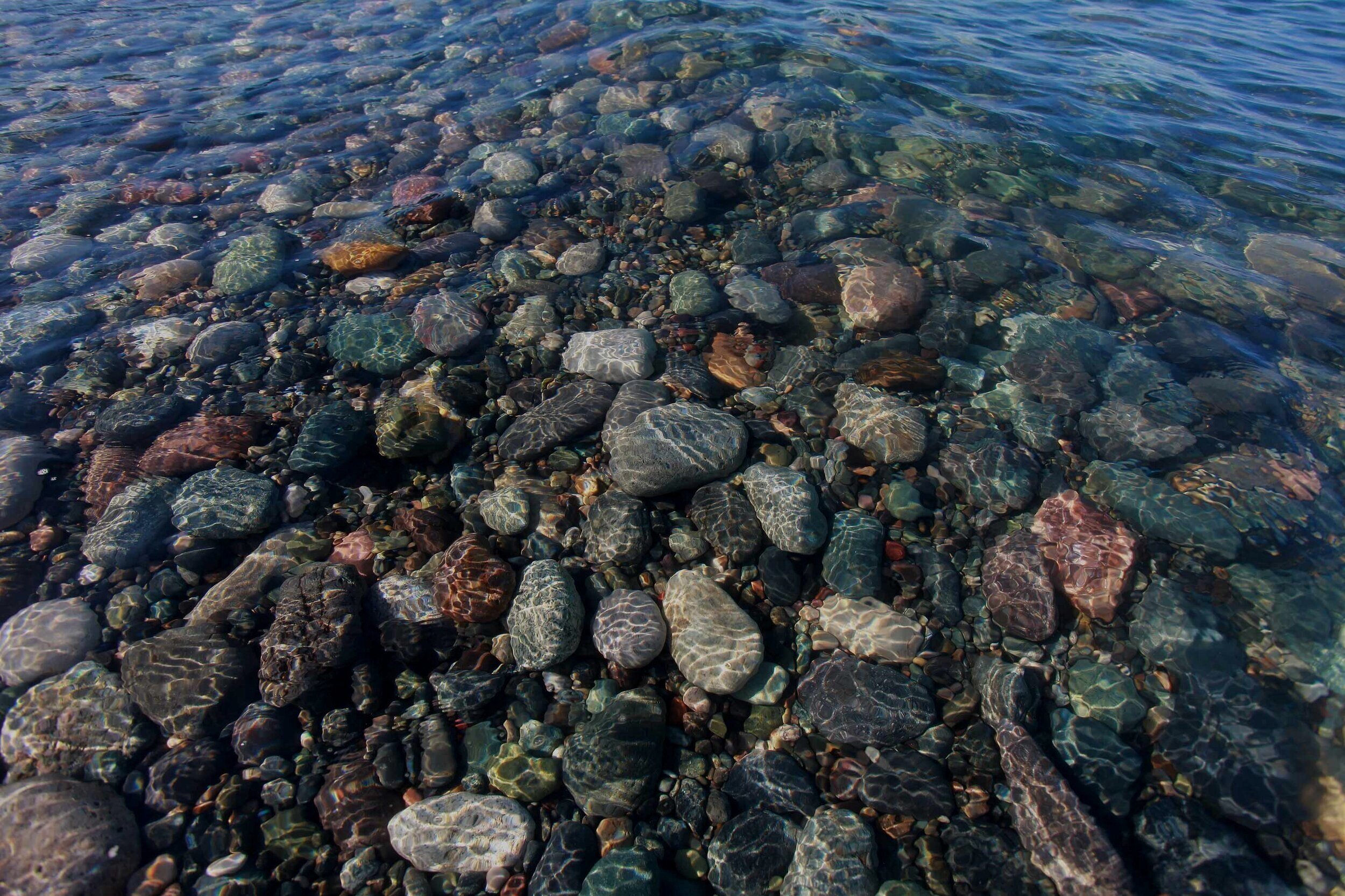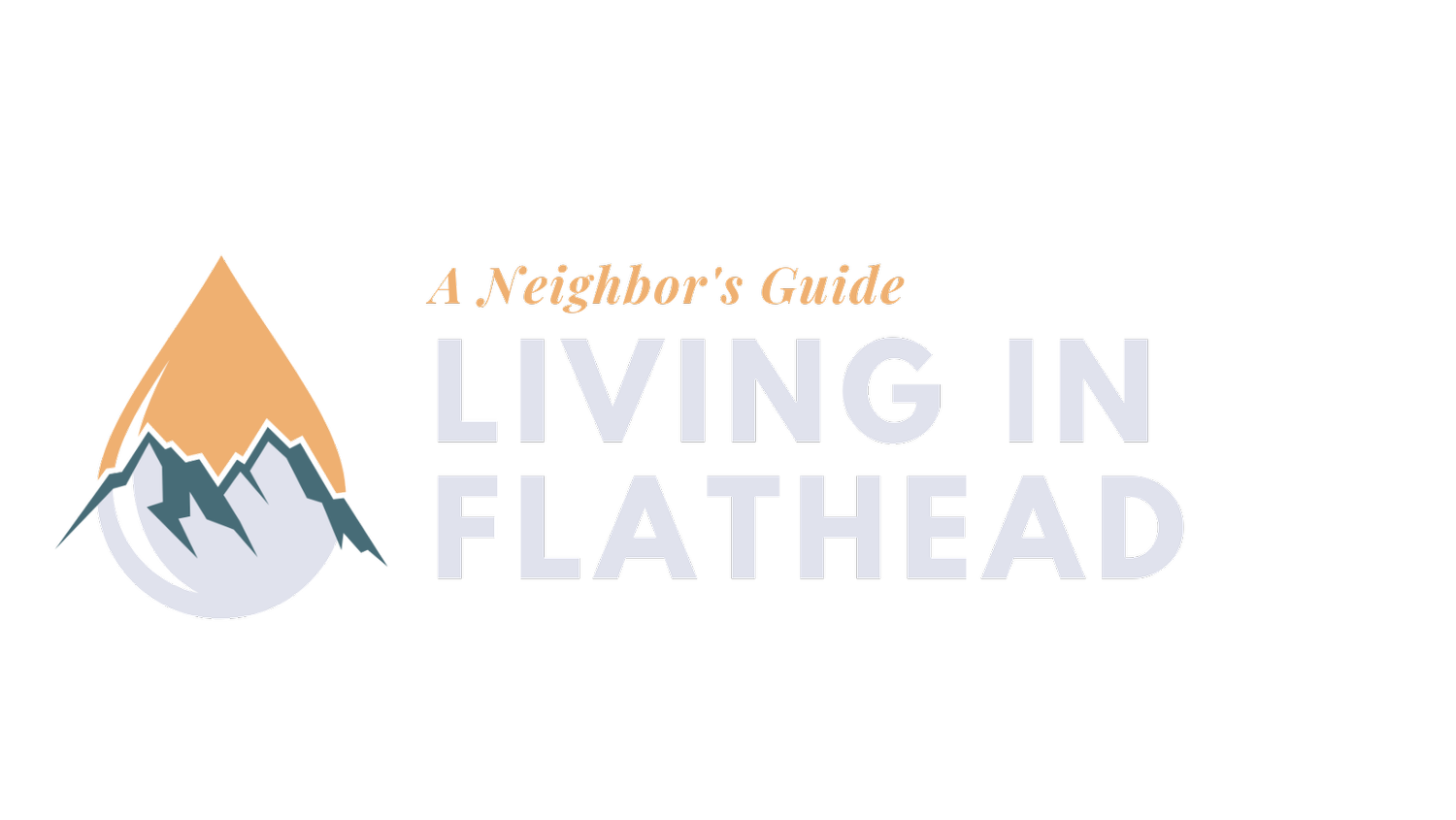
Living By Water
Clean water is one of our most valued – and most threatened – natural resources. Our lakes, rivers, and streams provide recreation, drinking water, scenic value, and habitat for fish and other wildlife. Despite these critical roles, few fully understand how their daily activities can impact the health of our freshwater.
Even if you live miles from a lake, your actions can directly affect water quality.
The Flathead Watershed
We all live in and impact a watershed.
As a resident of northwest Montana, you live within the Flathead Watershed. This means that all the water around you eventually drains into Flathead Lake and the Clark Fork River. Altogether, the Flathead Watershed drains six million acres.
Living here, it is important to understand that our actions can pollute streams, rivers, lakes, and groundwater, and recognize that everyone can help protect our precious clean water. Scroll down to learn about ways to protect our clean water.
Deep dive: Learn more about this special place in the Flathead Watershed Source Book.
Protect Montana Waters from Aquatic Invasive Species
By following the Clean, Drain, Dry procedure, recreational users can help prevent the spread of aquatic invasive species in Montana’s freshwaters.
Flathead Lake and watershed are at risk for an accidental introduction of aquatic invasive species. Our region’s scenic beauty is a magnet for visitors from out of state.
Zebra mussels are one of the most damaging aquatic organisms to invade the US. Early detection of invasive mussels is paramount to preventing an infestation. Once mussels are established, it is impossible to get rid of them, and a mussel invasion could forever change our watershed and the communities that depend on it.
Keep aquatic hitchhikers, like the zebra mussel, out of Flathead waters by cleaning your boat and gear, and stopping at all watercraft inspection stations.
You can protect Montana’s clean, clear, cold and connected waters.
-
Replace aging systems and never drive over your drainage system. Regularly maintained and cared for septic tanks can last longer. Find maintenance information at epa.gov/septic, or contact Flathead County Environmental Health Department.
-
Throw these items in the trash, never down a drain, toilet, or storm drain: fats, grease, pharmaceuticals, coffee grounds, paper towels, feminine hygiene products, diapers, wipes (including those labeled as “flushable”), oil-based paints, solvents, pesticides, household chemicals, hot tub treatments, or chemical drain openers. It is also best to limit or not use a sink garbage disposal which is hard on septic tanks and sewer treatment plants.
Check WasteNot! for ways to dispose of hazardous waste in the Flathead.
-
Harsh chemicals in cleaning products can kill the microbes that wastewater treatment and septic systems rely on and further contaminate drinking water wells. Consider replacing chemical household cleaners with biodegradable cleaning products or make your own, and do even more to protect the health of our waterways.
For more information, check EPA’s Safer Choice and Clean and Green Homemade Cleaner.
-
How many dogs live in the Flathead Watershed? It adds up!
Collect and dispose of pet waste (including cat litter) in the trash. When pet waste is left on the ground in public or at home, disease-causing organisms and nutrients can wash into storm drains and eventually into local lakes and rivers. It can be a public health risk and harm aquatic life.
-
Dirty car wash water often contains oil, grease, and toxic metals, as well as chemicals from soapy detergents. When soapy, dirty water enters a storm drain, it usually ends up in our local streams and rivers. Consider using a commercial car wash or follow these tips if you wash from home.
-
Whether its garden fertilizer, pesticides, or a de-icing salt, read the label and sweep up the excess (perhaps in spring).
Consider anything that can be washed down the drain… yours or a storm drain.
Landscape for clean water
Check out these strategies to help keep nutrients in the soil and out of storm drains, streams, and lakes. Beautiful buffer gardens help reduce flooding, replenish our aquifers, and protect aquatic life:
-
Avoid mowing along the water’s edge to prevent loss of essential root mass and maintain a 15 to 50 foot buffer of native plants.
-
Build on upland areas away from the water’s edge and the outer edge of river bends where erosion is more likely.
-
Use a diversity of native plants, including trees, shrubs, and grasses, instead of lawns – these have deep roots which help retain water in the soil, filter pollution, and prevent erosion. To maintain your view, plant tall, deep-rooting species along the sides of your view and shorter plants in the middle. Learn more about landscaping for clean water and Beautiful Lakeshore Buffer Gardens.
-
Keep leaves and grass off storm drains, sidewalks, streets, and streams. Clogged storm drains can flood the streets and harm aquatic life. Learn more about Leaf & Grass Removal.
-
Leave grass 3-4 inches tall so less water and fertilizer are needed. A mulch mower provides nutrients to lawns and retains more water. Learn more about Lawn & Garden Care.
-
Cover exposed soil with wood chips or mulch to reduce erosion and protect the soil.
-
Prevent livestock from damaging riparian areas by using fencing for short-term grazing or installing water gaps, hardened crossings, or offsite water.
-
Limit fertilizers and do not fertilize within 20 feet of water. Consider using organic fertilizers which are safer for people, pets, and wildlife.
-
Use permeable paver stones for walkways, patios, and parking areas to allow rain and snowmelt to soak through. They help reduce flooding and recharge our aquifers. Learn more about impervious surfaces.
-
Rain gardens capture, filter, and absorb runoff from roofs and pavement. They also reduce erosion and flooding while providing habitat for birds and insects and enhancing beauty.
Learn more about the Flathead Rain Garden Initiative. -
Reduce how much water you use in the garden. Sprinkle at dawn and dusk every other day or less, use soaker hoses, versus sprinklers, and don’t water while it’s raining.
Check EPA’s Green Scaping - The Easy Way to a Greener Healthier Yard.

-
While the Flathead Watershed has some of the cleanest waters in the country, many of our lakes and rivers are experiencing declining water quality.
Algae blooms can be caused by underperforming septic systems, fertilizers from lawns and farms, polluted stormwater runoff from roofs and streets, warmer water temperatures, and more. These can be toxic to humans, pets, and wildlife.
How we use water, recreate, treat the land, and what we leave on the landscape affects water quality. It’s everyone’s responsibility to understand how we can protect our clean water.
Follow the tips on this page to help keep our shared water resources clean and clear.
-
Drinking water in Flathead County comes from public and private groundwater wells and surface waters. For example, the City of Whitefish utilizes surface water from Haskill Basin and Whitefish Lake, while the City of Kalispell sources water from numerous deep wells.
Public drinking water systems are regularly monitored and more strictly regulated than bottled water. If you are on a private well, it is your responsibility to protect and test the water to ensure it is clean. The aquifer you tap into is shared with your neighbors.
If your water is contaminated, check if your well needs repairs or an upgrade, and talk to your neighbors to see if it is a deeper issue.
You can ask your County Health Department for a list of consultants qualified to test your well water. What you test for may depend on where you live and surrounding land use.
Flathead County Contact Info: +1 (406) 751-8130; ehcontactus@flathead.mt.gov; 40 11th Street West Suite 210, Kalispell.
-
In Montana, all waters are owned by the state. A water right allows the permit holder, in a specific location, to use a certain amount of water in a prescribed manner.
If a water right is attached to your land purchase, an ownership update must be registered with the Department of Natural Resources, Water Rights Bureau. Search, apply for, or update a water right at DNRC Water Rights.
Montana has 18 negotiated Water Rights Compacts. These are water rights held by Indigenous American Reservations, National Parks, and Montana Fish, Wildlife and Parks. Learn more about the history and current status of reserved water rights at Montana Water Right Compacts.
-
If you are planning to do work on or near a waterway in Montana, check whether permits are required. Make sure to landscape for clean water to keep nutrients on the land and out of our waters.
Permits are required to ensure wise use of our natural resources and prevent degradation of our streams and lakes. A Joint Application Form is available. Visit your County Conservation District office for guidance with permits.
Depending on where you are, the state or the Tribes manage the bed and banks of lakes and rivers (up to the high-water line) of all perennial streams and lakes.
Work on docks, stairways, and buildings along lakes must follow the county’s local lakeshore regulations.
Work in or near perennial streams or rivers on private land must first obtain a 310 permit from the local conservation district.
Flathead Conservation District
Confederated Salish & Kootenai Tribes Shoreline Protection Program
Lake County Conservation District
Flathead County Lake & Lakeshore Protection Regulations
-
The Flathead Watershed is home to some of the cleanest waters in the country and our lakes and rivers are usually safe to swim in. However, water quality is declining in some areas, so it’s important to stay informed and take simple precautions before jumping in.
Watch for the following before recreating:
Harmful Algae Blooms: These can form in lakes and reservoirs, especially in the warmer months. Some blooms produce toxins harmful to people, pets, and wildlife. When in doubt, stay out. Learn more about HABs.
E. coli Bacteria: Found in human and animal waste (including waterfowl), E. coli can cause illness if levels are high. The Flathead Lakers monitor 16 public beaches around Flathead Lake - check the Swim Guide for test results during the summer months.
Swimmer’s Itch: This skin rash is caused by microscopic parasites found in shallow, marshy waters. Reduce your risk by avoiding shallow waters where it’s been reported and toweling off after swimming. Learn more about swimmer’s itch on Flathead County’s website.
Clean, swimmable water is something we all enjoy - and protecting it is everyone’s responsibility. Learn more about how you can help at Living-by-Water.org.
Learn more about safe and responsible recreation at Safe-Responsible-Recreation.org.
-
The Flathead Watershed has several monitoring efforts that track the quality of our lakes and streams. The Northwest Montana Lakes Network (NMLN) and the Whitefish Lake Institute (WLI) train citizen science volunteers to monitor water quality, identify and report aquatic invasive species, and promote watershed stewardship in 41 lakes in northwest Montana. Contact WLI at whitefishlake.org to volunteer as a citizen scientist with NMLN.info.
The Flathead Lake Biological Station has been monitoring Flathead Lake since 1899, serving as a “Sentinel of the Lake”. Monitoring Montana Waters is a program at FLBS that supports water quality monitoring efforts by providing scientific, technical, and financial support to citizen-led watershed groups. Learn more at MMW.
Safe and Responsible Recreation
Did you know?
Montanans highly value and rely on the quality of our natural resources. There are protections in place that help prevent pollution and safeguard water quality. If you do work near water, it's important to be aware of the following regulations and Best Management Practices to ensure clean water.










